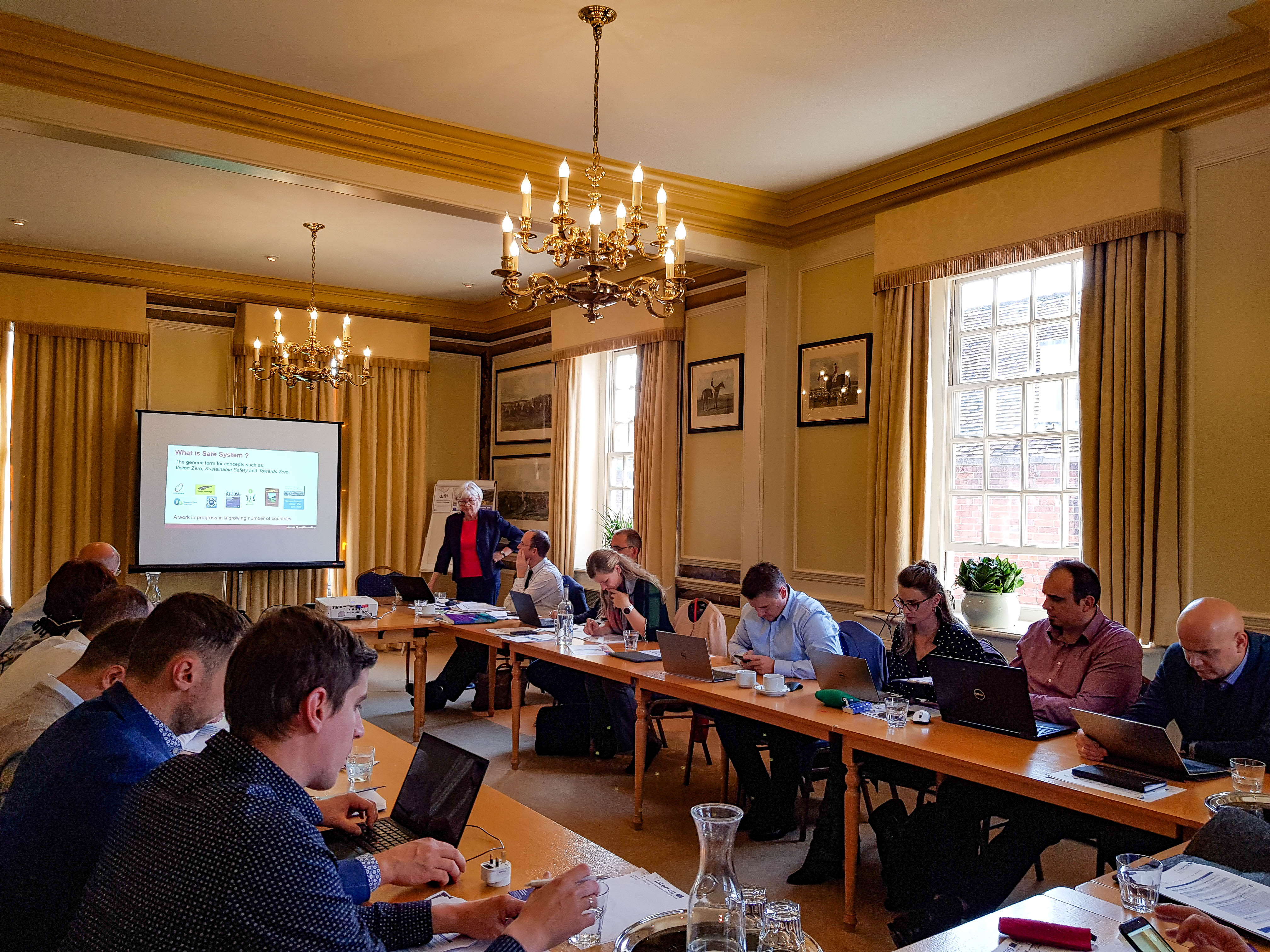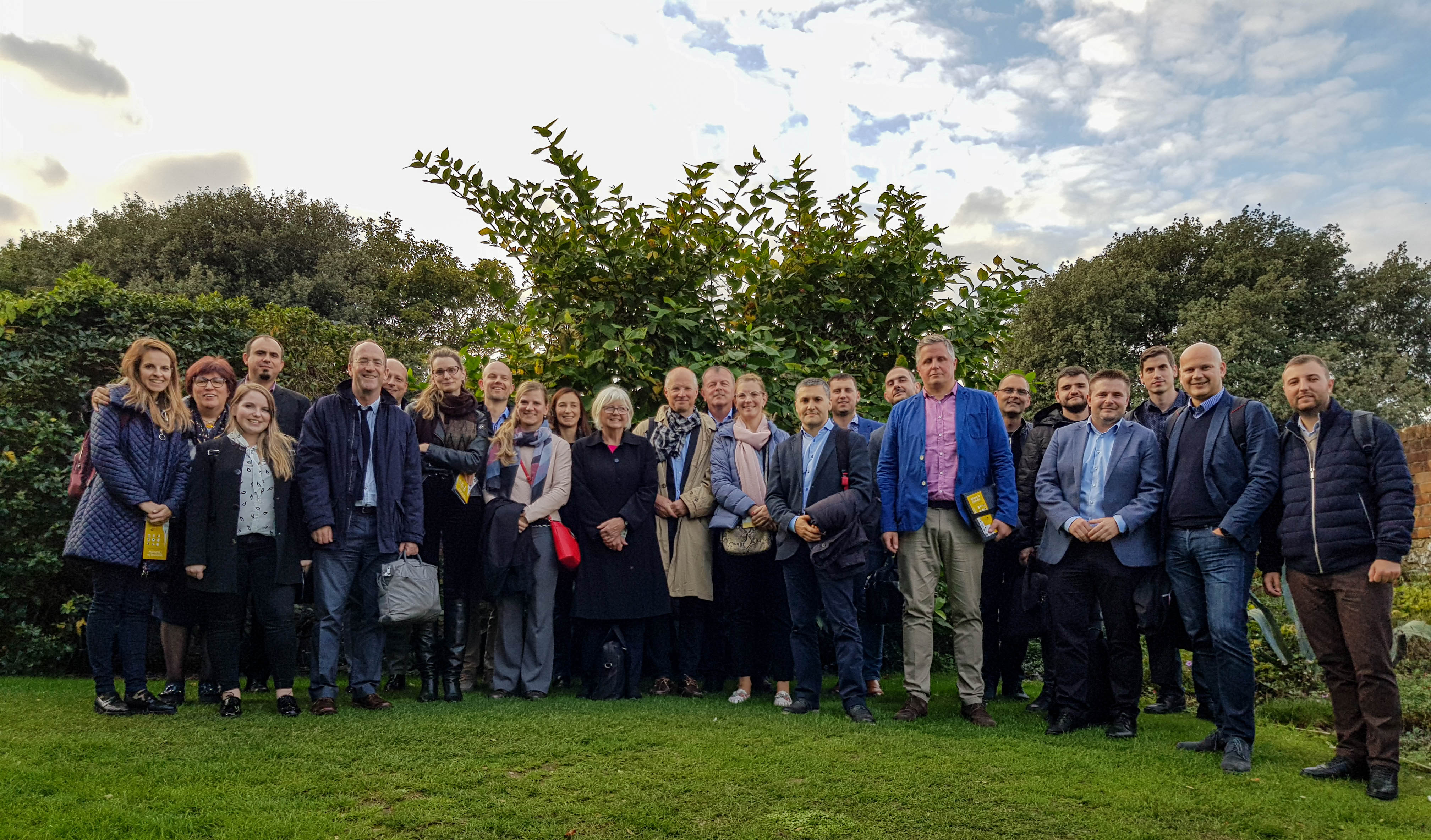RADAR - RADAR PROJECT’S SECOND STUDY VISIT: INVESTING IN ROAD INFRASTRUCTURE SAFETY
30-10-2019
The RADAR project Associated Strategic Partner, International Road Assessment Programme (iRAP), organised a study visit on safety and maintenance upgrades using Safer Roads Investment Plans (SRIPs) on October 22 and 23, 2019, at West Sussex County Council in Chichester, UK.

The purpose of this study visit was to hear about leading UK practice in road injury reduction and the application of Safer Roads Investment Plans. Its aims were also to consider the potential for their application in the Danube region as well as to familiarize project partners and associated strategic partners with best practice and good examples of road safety investments. The visit introduced wider issues about how decisions in road safety spending are made as well as examples from the UK including the site visits to locations in West Sussex.

On the 2-day study visit Jeanne Breen OBE firstly led the debate on when the road investment actually means spending on road infrastructure safety, illustrating the presentation with how road safety funding operates in the UK. Brian Lawton, Road Safety Foundation, and Jon Forster, West Sussex County Council, opened a great discussion among participants on how to make change happen on the ground, using the example of improvements to the A285 from the Safer Roads Fund work of the 50 highest-risk local authority roads in England.
Vanina Popova Katsarova, Bulgarian Association for Road Safety, drew attention to links with road maintenance – “if the SRIPs include road maintenance elements and we are required to star rate roads when we do plan an upgrade, we can use maintenance activity and budgets to improve road safety.”

Safer Roads Investment Plans (SRIPs) identify ways in which fatal and serious injuries can be prevented in a cost-effective way. The iRAP ViDA software that prepares Star Ratings also calculates the casualty reduction that might be expected from implementing any of around 90 countermeasures individually or in logical combinations. The software examines risk every 100 meters along an inspected road, comparing the value of crashes that might be prevented against the cost of implementing a countermeasure. The software provides an economic appraisal of a Safer Roads Investment Plan (SRIP). This SRIP can be interrogated at the individual section, region or national (portfolio) level to assess the appropriateness and effectiveness of individual options for improvement. SRIPs can be refined to allow economic appraisal of a locally acceptable treatment programme through modeling a User Defined Investment Plan (UDIP). The appraisal period is normally 20 years, allowing the cost of implementing each measure to be evaluated against the expected casualty savings over the economic life of the investment. iRAP considers more than 90 proven road improvement options to generate affordably and economically sound Safer Road Investment Plans (SRIP) that improve a road's Star Ratings and will save lives.
Marko Ševrović, European Institute for Road Assessment – EuroRAP emphasised how spending before corrections are required can be cheaper, “the key to making major improvements or road safety is to stop building two-star roads and start building three or more-star roads. Build safe new roads and then fix the old ones.” Ševrović added: “The price difference on newly-built roads between one- or two-star road and three- or four-star road can be as little as 2 % if crash countermeasures are included during initial design and construction.”

Safe. Not safer.
Our main road networks need to be safe as much of our travel is on these intensely used networks. Any flaw in their in-built safety means tragedy sooner rather than later, clarified John Fletcher, of TRL (previously Transport Research Laboratory). Road safety funding is often lost in more general spending in national infrastructure investments, explained Breen, “we need to make sure that safety spending is ring-fenced and explicitly for safety so as to ensure that safety investments for projects and programmes focus more on outcomes. Targeting high-volume, medium to high-risk sections with proactive treatments can achieve high returns on investment.”
Introducing a Safe Systems approach is demanding and requires buy-in to the process at every level. There was a feeling among participants that not all are ready for such a far-reaching policy approach. Even in the UK it was obvious that Safe Systems are to be aspired to and cannot always be fully implemented despite the good intentions of those involved. Many of the Danube countries are not currently in a position to implement in the way that a Safe System is being adopted in countries advanced in road safety. All representatives from the Danube region agreed that to achieve global reductions in road trauma, a significant scaling up of road safety awareness, action, expertise and knowledge sharing is needed.
Investing toward a safe future
Society’s willingness to blame road users for deaths has lulled us into a sense that designs which are fundamentally unsafe are adequate. This must change: pedestrians without footpaths, roadside hazards without safety barriers, high-speed undivided roads must become things of the past. Road crashes are the number one killer of young people worldwide. What greater incentive could we need to invest in safer infrastructure?

The study visit in Chichester built on the Road Safety Expert Group meeting and the report from TA1: Safer Roads Investment Plans from March 2019 in Ljubljana, Slovenia. See here for more information.

